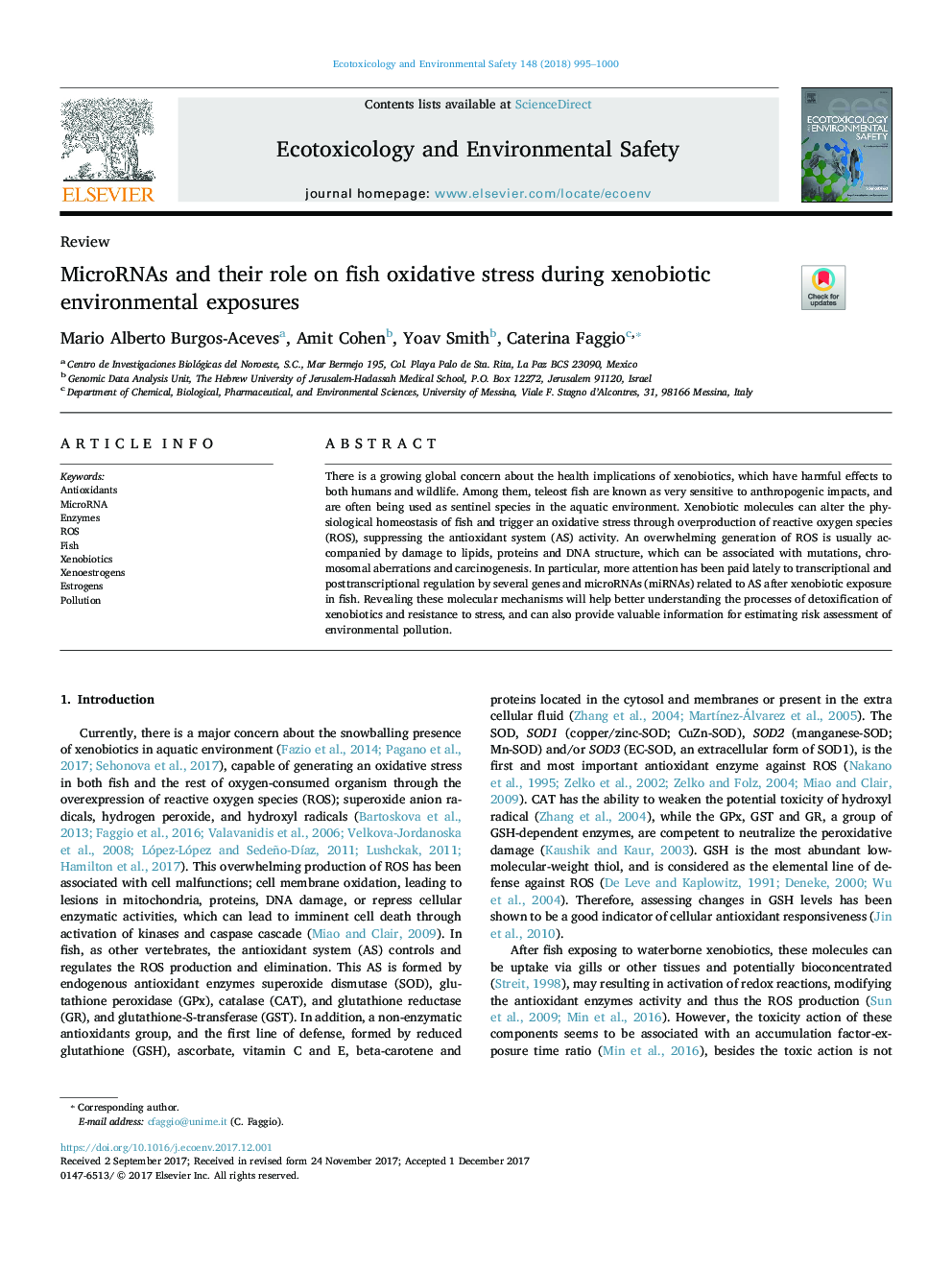| Article ID | Journal | Published Year | Pages | File Type |
|---|---|---|---|---|
| 8854659 | Ecotoxicology and Environmental Safety | 2018 | 6 Pages |
Abstract
There is a growing global concern about the health implications of xenobiotics, which have harmful effects to both humans and wildlife. Among them, teleost fish are known as very sensitive to anthropogenic impacts, and are often being used as sentinel species in the aquatic environment. Xenobiotic molecules can alter the physiological homeostasis of fish and trigger an oxidative stress through overproduction of reactive oxygen species (ROS), suppressing the antioxidant system (AS) activity. An overwhelming generation of ROS is usually accompanied by damage to lipids, proteins and DNA structure, which can be associated with mutations, chromosomal aberrations and carcinogenesis. In particular, more attention has been paid lately to transcriptional and posttranscriptional regulation by several genes and microRNAs (miRNAs) related to AS after xenobiotic exposure in fish. Revealing these molecular mechanisms will help better understanding the processes of detoxification of xenobiotics and resistance to stress, and can also provide valuable information for estimating risk assessment of environmental pollution.
Related Topics
Life Sciences
Environmental Science
Environmental Chemistry
Authors
Mario Alberto Burgos-Aceves, Amit Cohen, Yoav Smith, Caterina Faggio,
